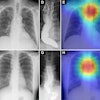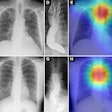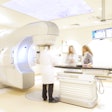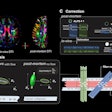Dear AuntMinnie Member,
Last week in this space, we reviewed how researchers and clinicians are learning more about the neurological manifestations of COVID-19, the disease caused by the SARS-CoV-2 virus. This week saw the publication of several new studies on COVID-19's effect on the brain.
In our top story of the week, researchers from Italy described the case of a radiologic technologist who lost her sense of smell after contracting the virus. They concluded that SARS-CoV-2 may enter the brain through the olfactory pathway and cause dysfunction of sensorineural origin.
In another widely read article, we covered a study in which Iranian researchers reported on the occurrence of stroke in a child who was infected with the virus and suffered stroke and right-side paralysis -- another case of COVID-19 affecting the brain.
And in a review article, researchers from Mount Sinai Hospital in New York City discussed the strengths and weaknesses of the various modalities for imaging COVID-19, as well as some of the telltale signs to look for on each.
Keep up to date on these stories and more in our MRI Community.
Radiology confidence plummets
The COVID-19 outbreak led to a well-documented drop of at least 50% in imaging procedure volumes as hospitals scaled back on all but the most necessary scans. It's understandable, then, that radiology administrators and directors expressed starkly lower confidence in their business prospects for the second quarter, according to the Medical Imaging Confidence Index (MICI).
The MICI surveys administrators and directors on five different aspects of radiology operations. Almost all five components plunged for the survey period as some managers said they were in survival mode.
The COVID-19 outbreak has also apparently prompted national medical group Mednax to accelerate its plans to divest its radiology business, as we reported on Friday.
But what goes down must eventually come up. A team led by Stanford University researchers postulated on the six factors that will influence medical imaging's recovery in a story you'll find in our Imaging Leaders Community.
Imaging on social justice
Finally, we would be remiss if we didn't reflect on some of the tragic and disturbing events of the past week, events that have highlighted the structural racism inherent in many American institutions.
Fortunately, societies that represent multiple aspects of radiology have weighed in with statements condemning racial injustice, particularly with respect to the unequal levels of medical care that are given to black and minority Americans -- a disparity that has been disturbingly evident during the COVID-19 pandemic.
Hopefully, the commitments these groups are making to effecting positive social change will continue as the headlines begin to fade.



















